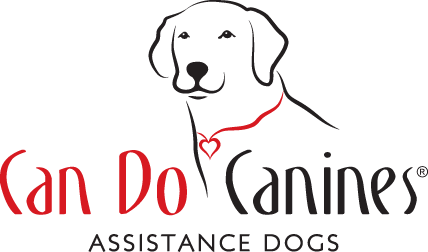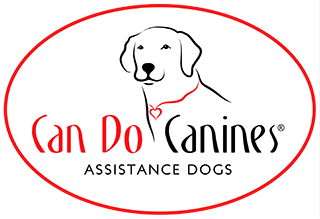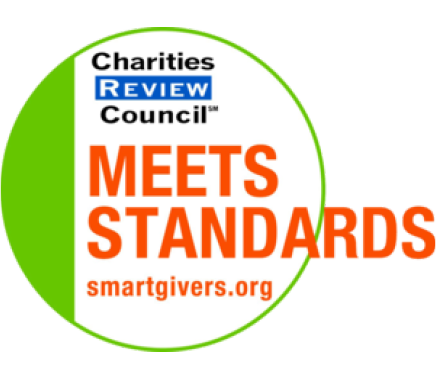 Public access is what sets service dogs apart from our pet dogs. Learning how to behave in different public settings is one of the most crucial concepts for Can Do Canines in training. A huge amount of time and training goes into each dog to ensure they can successfully navigate the human world. Our volunteer handlers also receive special training in order to understand public access rules and program expectations.
Public access is what sets service dogs apart from our pet dogs. Learning how to behave in different public settings is one of the most crucial concepts for Can Do Canines in training. A huge amount of time and training goes into each dog to ensure they can successfully navigate the human world. Our volunteer handlers also receive special training in order to understand public access rules and program expectations.
Training our dogs to thrive in busy and unpredictable environments starts with TRUST. The dog needs to trust themselves, the world around them, and especially their handler. Because trust doesn’t happen overnight, we ask that volunteers do not take dogs out in public until they have had them for one week. The first week with a new dog should be spent getting to know one another, setting expectations, and building trust. Dogs that trust their handler are less likely to show fear or reactivity in public.
Following the first week, volunteers with public access or “cape rights” are typically welcome to train the dog in public (some dogs may go to a foster under restrictions- be sure to double check that they are cleared for public work).
A successful training outing starts with careful planning.
Start preparations for an outing by reviewing our helpful guide.
Public training varies from puppy-hood to adult dog, with different goals for each developmental stage. The modules here will describe the ideal training outing for the stage, from the focus, to places to go and appropriate exposures.
2-5 months of age
Public training at this stage should focus on exposing the puppy to a variety of unique experiences. These experiences should be neutral or positive and the puppy should always feel safe and supported in their exploration.
6-8 months of age
Because this age can be a difficult one, training in public should be less about experiencing many new things and more about maintaining attention, cues and behavior in familiar places. As the dog learns self-control, the outing length can be extended.
9-14 months of age
These dogs will have more cues to practice and are starting to exit the “big puppy” period. This module focuses on longer and more frequent outings, moderately noisy or crowded locations, increased controlled distractions, and working with head halters.
15+ months of age
At this point, the goal is to “normalize” outings as a regular part of their working life. The dog should be able to perform common cues in public, last for longer outings and participate in normal shopping trips, movie theater visits and be taken to restaurants during a meal.




